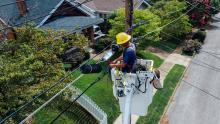Vermont Looks To Bring Oasis of Fiber-Connected Telehealth Hubs to ‘Healthcare Deserts’
Many rural healthcare facilities are struggling to keep their doors open. Some have been shuttered. Add to that the looming federal budget crisis threatening to end Medicare payments for telehealth and the urgency of what a coalition of Vermont healthcare leaders, librarians, and state broadband officials are doing comes into view.
It’s called VITAL VT (Virtual Integration for Telehealth Access through Libraries in Vermont) – an exploratory effort being launched with a $10,000 grant from the Leahy Institute For Rural Partnerships, working in collaboration with the University of Vermont Medical Center and the Vermont Library Association.
The aim is to leverage the state’s unprecedented deployment of community-owned fiber networks and create a scalable, community-centered telehealth model.
“We’re really looking to find any way to make any of our community members in Vermont get access to care – easier, better, quicker. So we’re wondering if telehealth (hubs) might be the right answer for that, if we’re able to put it right in people’s libraries, right in their own towns,” Roz King, chief of research for emergency medicine at the University of Vermont, told local CBS affiliate WCAX.
Data-mapping ‘Healthcare Deserts’
In speaking with ILSR this week, King said what spurred the initiative was a talk given by one of UVM’s medical students who noted how Vermont was beginning to see “healthcare deserts where in some rural counties PCP’s were aging out and no one was there to provide healthcare (services).”



